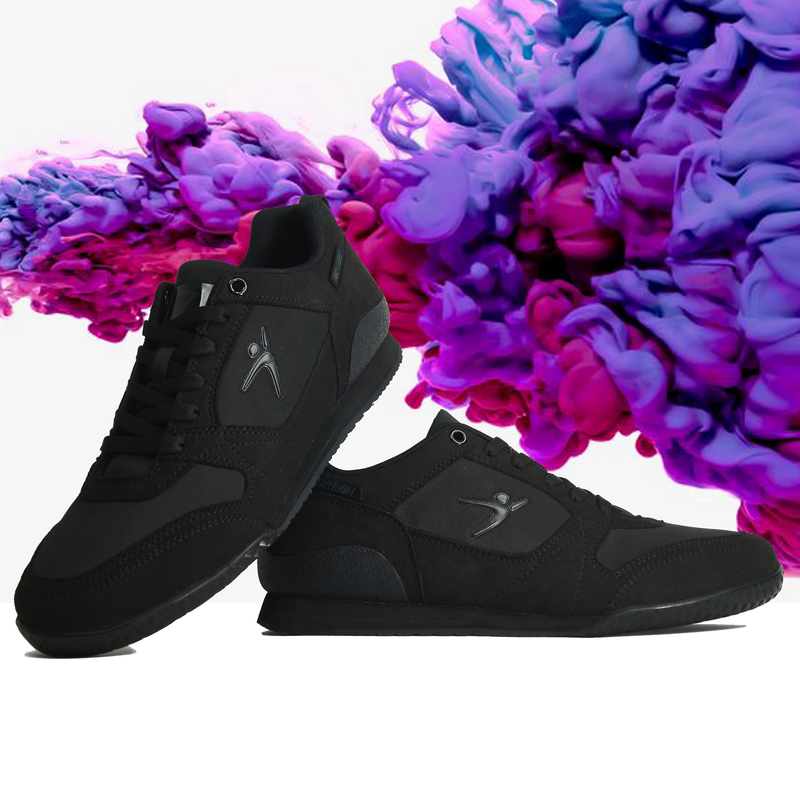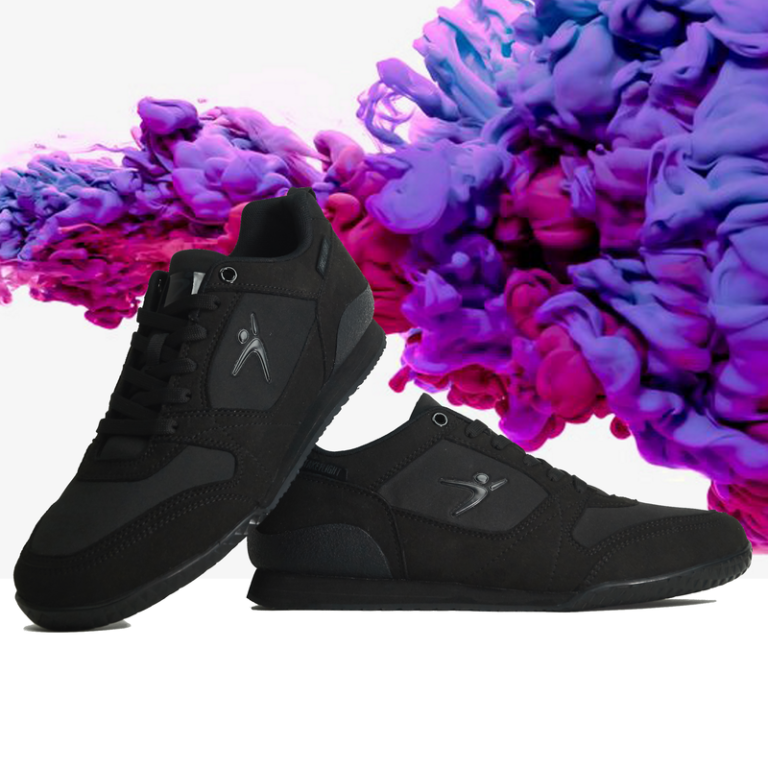Parkour shoes are THE most important aspect of a Traceur’s wardrobe. You can wear any clothing while doing Parkour, and you can train at any location, but without the right shoes, doing Parkour can be troublesome and even dangerous. Most people, even those new to Parkour, intuitively know this, but what isn’t intuitive is what makes a Parkour shoe great. We’re here to break that down for you.
When you’re searching for a great Parkour shoe there are handful of important things to consider. Not everyone will agree on what specific details make one Parkour shoe better than another, but virtually all Traceurs and Freerunners will agree on the concepts behind what makes a Parkour shoe great. Below we have detailed the top 5 aspects in order of importance. We hope this helps you in choosing the right Parkour shoe for you.
Aspect #1. Traction (aka Grip)
Undoubtedly the most important aspect to a Parkour shoe is traction also referred to as grip. In most sports this is true too, but it’s especially important in Parkour & Freerunning where you are running up walls, balancing on metal rails, and having to stop precisely. Without great grip on your Parkour shoes you are going to be slipping and sliding around in one way or another, and believe us when we say we’ve been there and done that. With that in mind, realize that not only will amazing grip improve your performance, but poor grip can actually be dangerous.
So what gives a shoe great traction? Surprisingly there are three things:
a) The rubber compound of the sole of the shoe. Go into any shoe store and feel the bottoms of different shoes. The material itself will feel stickier on some shoes and less sticky on others. This is because those outsoles are made with different rubber compositions. You’ll know it when you feel it – the stickier the rubber, the better the grip. Keep this in mind when testing shoes.
b) The tread design of the sole of the shoe. The tread design on a shoe also plays an important part in a shoe’s traction / grip! In the Parkour world in the early 2010s it was commonly believed that the more grip surface a shoe had, the more friction it would give the wearer. That led to some shoes being almost completely smooth on the bottom. Since then, this belief has evolved to encompass valuing a good tread design as well, but keep in mind the concept is still there and it’s still important. Some form of large gripping surface and/or intentional tread design exists in every good Parkour shoe. And likewise, if a shoe has a very small surface area, pointy aspects (you’ll see this in hiking shoes), or plastic components in the sole, avoid them like the plague.
c) Shoe flexibility. Shoe flexibility is a category all its own, so we’ll keep this explanation pretty simple. A shoe that doesn’t bend won’t be able to fully utilize the traction potential of its rubber compound and its tread design (more on this in a bit).

Aspect #2. Feel and Cushion
Once you’ve found a shoe with incredible traction, next on your list is find a shoe with incredible feel and cushion. Cushion or cushioning is straightforward enough – that’s what feels soft and comfortable. The term “feel” in Parkour shoes refers to how much sensitivity one has to the ground beneath your feet. The more you can kind of “feel the ground” the more “feel” the shoe has. Make sense?
But here’s the thing – not every Parkour athlete or Freerunner agrees on the appropriate cushion or feel in a shoe. Some of that comes down to skill and some comes down to style. That’s because feel is always at odds with cushioning and movement/training style often informs the need for both.
Think of it this way: if you are barefoot then you have the best feel in the world! You can feel every little rock or blade of grass beneath your feet and toes. But you also have absolutely zero cushioning. In contrast, if you are wearing super plush moon boots that have springs and inches of cushioning, you will probably only be able to feel angle differences when you step on big rocks or roots, but it will probably also feel like you’re walking on pillows. This is why Parkour shoe designer Adam Dunlap coined the term “cushion-to-feel ratio,” and we think explaining this will helps rationalize the two ideas so you can help find the best Parkour shoe for you.
The cushion-to-feel ratio basically says that the more cushioning you have in a shoe the less feel you’ll have, and the more feel you have the less cushioning you’ll have. It’s a tradeoff that can be seen when comparing moon shoes to being barefoot. So which is better: more cushioning or more feel? That’s exactly where traceurs do not all agree.
If a traceur is extremely adept he/she generally won’t need as much cushioning because he will be better at absorbing landings. But if two traceurs are equally adept and one prefers training big drops while the other prefers training technical movements, then the one training big drops will most likely want a shoe with more cushioning and less feel while the traceur training technical movements on bars and ledges etc will most like trade cushion for sensitivity.
So which is better: more cushioning or more feel? At the end of the day, you have to choose what you like and what works for you, just keep in mind that these two concepts work together and are kind of at odds with each other. The most important thing is to choose a Parkour shoe that feels comfortable and supportive. As long as you’ve done that you’ve picked the right pair, and you can adjust on your next pair of shoes.

Aspect #3. Durability
The third aspect you have to consider when buying a pair of Parkour shoe is durability. Parkour is one of the most, if not THE most, intensive sports in existence when it comes to the demands put on the shoes by the athletes. No other sport has so many different surfaces and so much consistent, daily impact from practicing the sport. So make sure to choose a shoe that will last.
A short history snippet: one common, common problem in the early days of Parkour footwear was the nose of the shoe. Traceurs found that shoes from all brands were extremely susceptible to wearing down at the nose. For some reason all the tacing and precisions seemed to cause this. This is why many Parkour shoes have either designs that wrap around the toes, or they have found ways to reinforce this part of the shoe with extra glue or other measures.
One thing is for certain, the best way to know how durable a Parkour shoe is to wear it. You’ll find out pretty quickly if it’s standing the test of time, and some are clearly better than others.
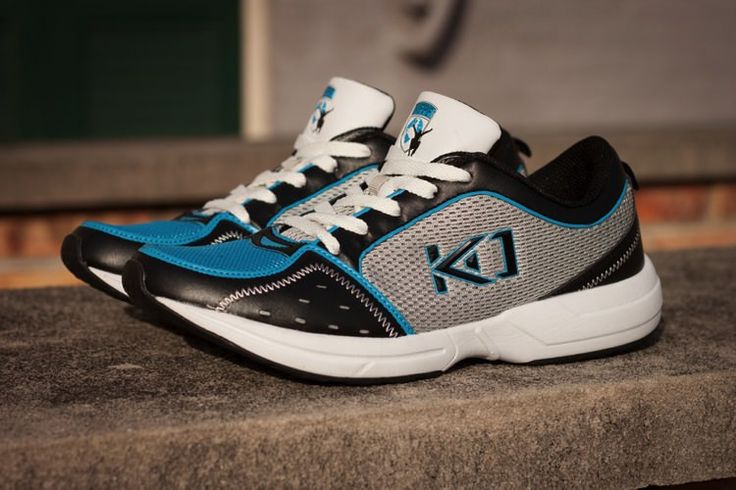
Aspect #4. Flexibility
The first three aspects that we have covered (traction, cushioning & feel, and durability) are paramount when choosing a Parkour shoe. This fourth aspect is important as well, but this is an aspect where things start becoming a lot more subjective.
Flexibility is important in a Parkour shoe, there’s no doubt about it. Too much rigidity in a Parkour shoe and you will have problems training. But not all athletes agree on how much flexibility is needed. That’s because different training methods and different movement styles lead to different preferences. When it comes to flexibility some Traceurs like shoes that you can scrunch up into a ball, and some traceurs like shoes that are rigid like classic running shoes. You have to find what level of flexibility is important to you, and you might have to experiment a little bit to find out what you like best. Also, this is a preference that might totally change over the course of your training, and that’s totally to be expected.
A few tips on finding the right flexibility for you:
a) If you are more into freerunning, flips, bar work, or really technical challenges, then you might want to consider a shoe that is more flexible. This will play an important role in your movement and execution because a more flexible shoe usually also has less cushion and more feel, and that’s important for precise movements.
b) If you’re more into classic Parkour training and big drops then you might want to consider a shoe that is a bit more rigid. The truth is, even rigid shoes bend a lot more at the moment of impact than you might think, so if your goal is to train the more traditional style as exemplified by David Belle, then less flexibility is totally fine. Also, shoes that are less flexible usually have more cushioning so that’ll help you with landing too.
As perhaps you are now seeing, a lot of these aspects (flexibility, cushioning, feel, durability) all impact and affect each other. Even the rubber compound that we addressed in traction aspect is plays into these things but that’s getting a bit too detailed for this analysis so we’ll leave it here.
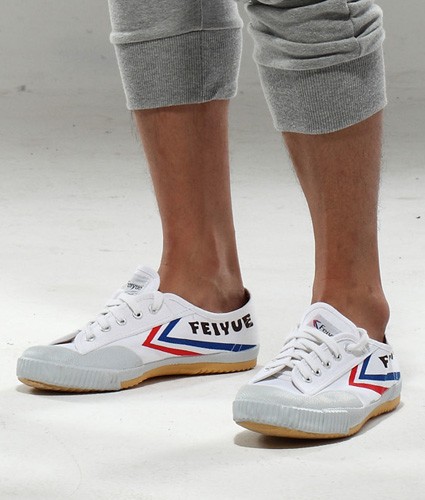
Aspect #5. The Style
Let’s face it – we all want to trace in style. Function is paramount, and there’s no point in looking cool if you can’t make the jump. But all things being equal, finding the coolest looking shoe is what everyone wants as well.
Although style is completely objective one thing to consider is color. Most likely your Parkour shoes will get dirty, so finding a white pair of shoes probably isn’t ideal. Darker materials are probably best for maintaining any sort of long-term style look. Appropriately, black is the current go-to color in the Parkour world for shoes designed and worn by traceurs and freerunners. But some traceurs and freerunners do train in lighter color shoes, and that’s cool too! Especially if you are always training in Parkour gyms instead of outside then it might not be that big of a deal.
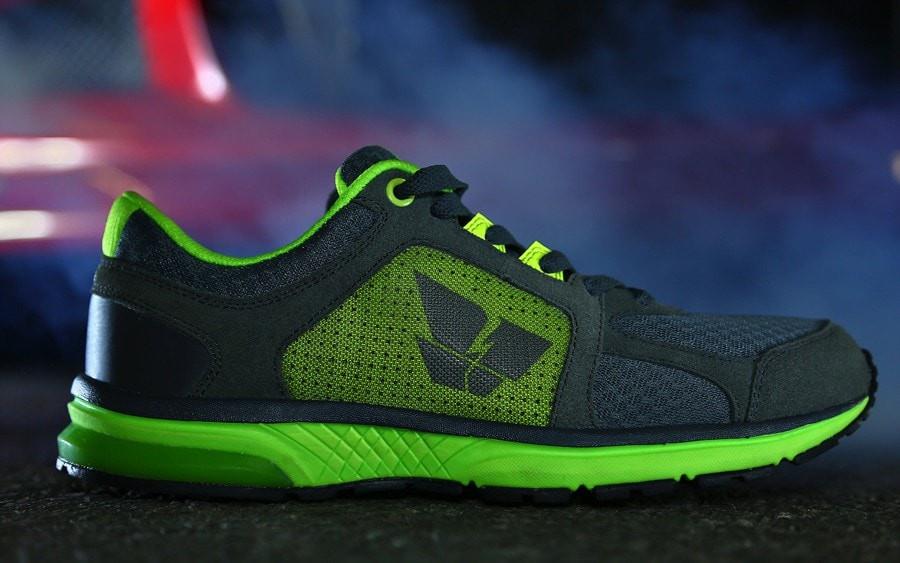
Conclusion
The 5 most important aspects to look for in a Parkour shoe are (in order of importance):
- Traction / Grip
- Cushioning and Feel
- Durability
- Flexibility
- Style
There are many other subtle aspects of Parkour shoes that we could get into, but those ideas start to border on Parkour shoe design rather than picking the right Parkour shoe, and to be frank there aren’t many Parkour shoes in the world that are yet looking at those aspects. Suffice it to say, there are a handful of amazing Parkour shoes out there, and at the end of the day there is no right or wrong Parkour shoe. There is only a shoe that you feel good about training in and a shoe that you don’t feel confident training in. Take our advice as just that – advice – and then look for the shoes that resonate with you. Whatever you choose, the most important thing is you get out there and start moving.
